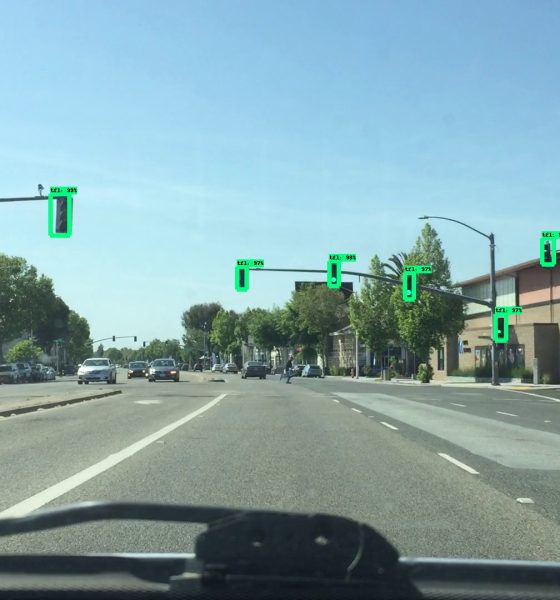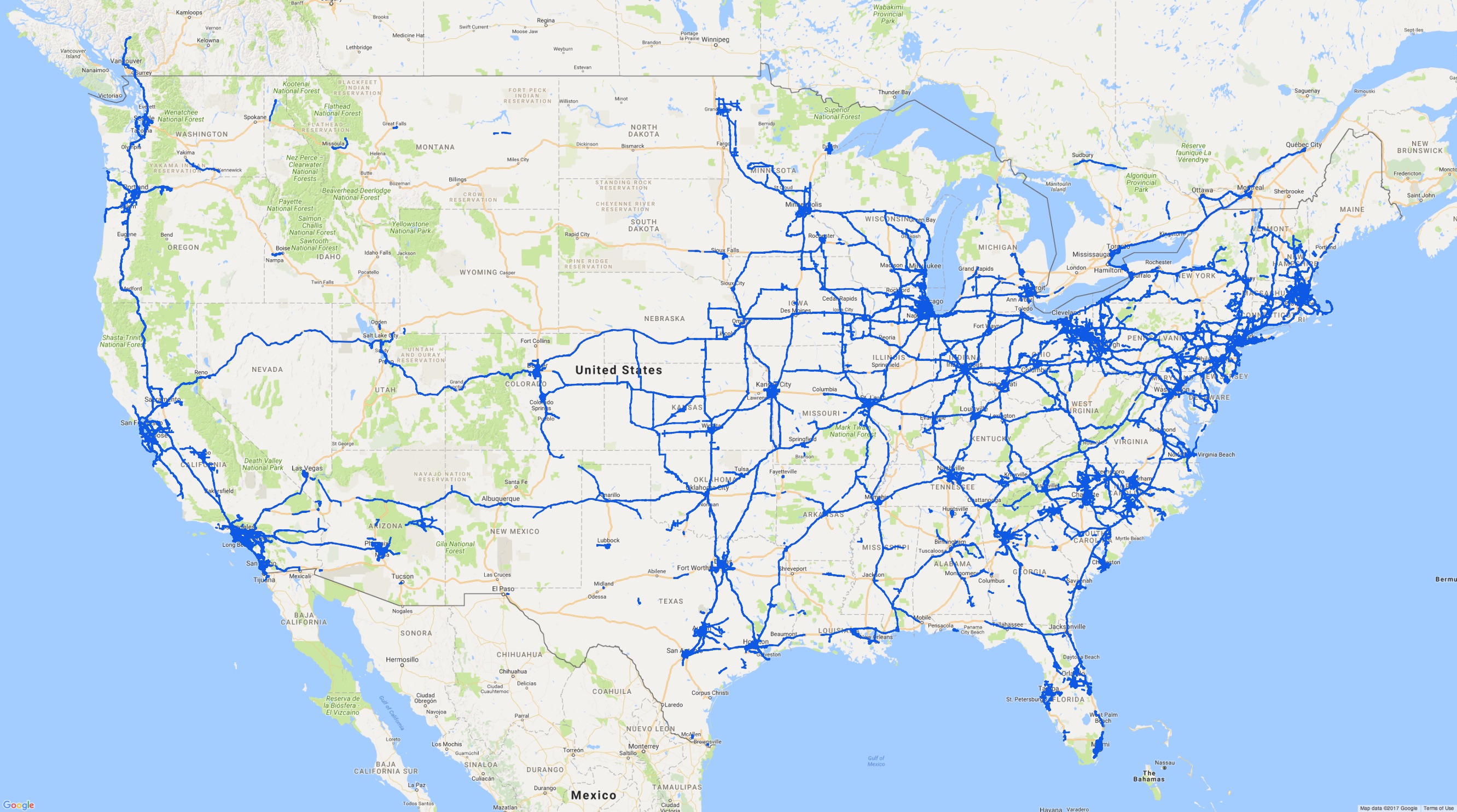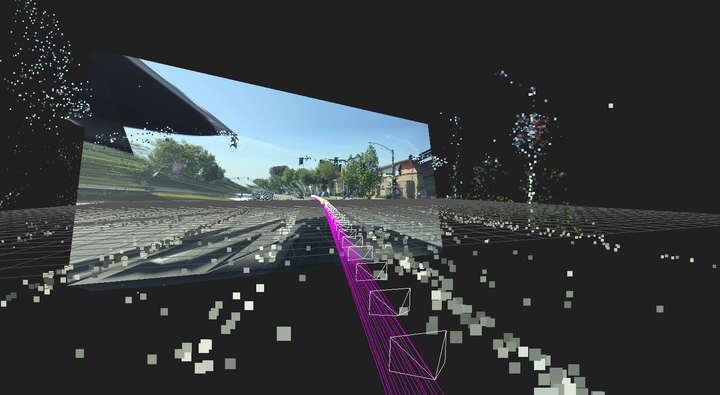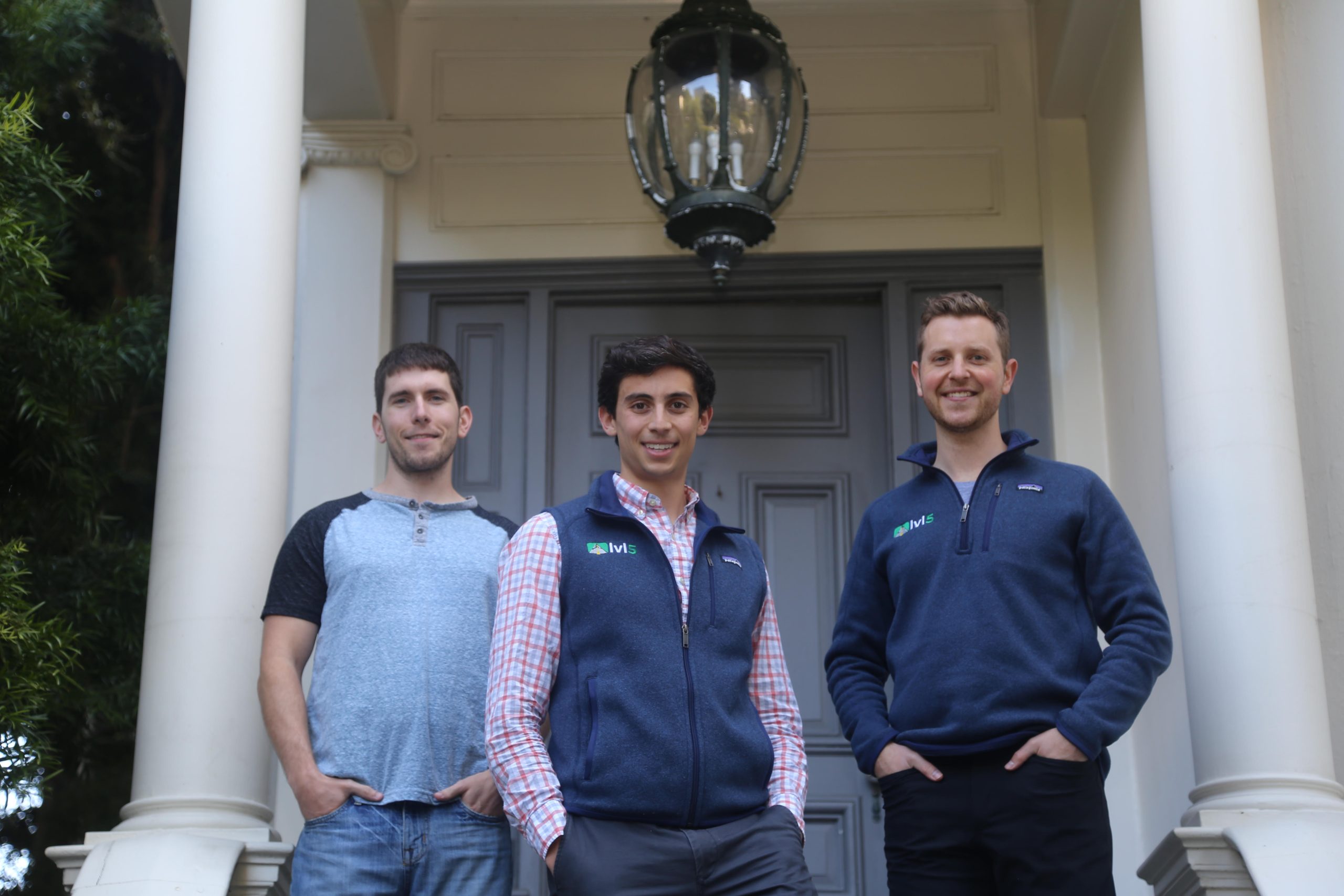

News
Tesla Autopilot veterans launch company to accelerate self-driving development
After working on Tesla’s Autopilot team for 2.5 years, Andrew Kouri and Erik Reed decided to start their own self-driving, AI-based company rightfully named lvl5. Together with iRobot engineer George Tal, lvl5 aims to develop advanced vision software and HD maps for self-driving cars.
Founded in 2016, lvl5 was incubated at renown Silicon Valley incubator Y Combinator and later raised $2 million in seed funding from investor Paul Buchheit, who’s a partner at Y Combinator and creator of Gmail, and Max Altman’s 9Point Ventures.

In just 3 months, lvl5 racked up almost 500,000 miles of US roadway coverage with Payver. (Photo: lvl5)
“Working with lvl5’s founders while they were at Y Combinator, it was clear they have unmatched expertise in computer vision, which is the secret sauce of their solution,” said Buchheit. “I have no doubt this is the team to make self-driving a reality in the near term.”
At the center of lvl5’s technology is their computer vision algorithms. Founder and CTO George Tall previously specialized in computer vision technology at iRobot. In addition to Tall’s experience at iRobot, Kouri and Reed’s experience at Tesla undoubtedly left them with unparalleled expertise in computer vision.
Instead of turning to expensive LiDAR technology, lvl5’s computer vision analyzes its environment for stoplights, signs, potholes, and other objects. The system can be accurate to 10cm, a notable measure considering it’s derived from simple cameras and smartphones. In comparison, LiDAR systems can cost over $80,000 but are accurate to 3cm.
- Each purple trace through the intersection contributes to building the 3D map from a 2D image. For each frame, lvl5’s computer vision technology computes the position of the vehicle relative to other objects in the intersection and create a point cloud that resembles the output from LiDAR. Each white sideways “pyramid” represents the location of a captured frame in the video trace. (Photo: lvl5)
- This image is taken from one of lvl5’s neural nets, which is designed to draw a box around the position of traffic lights in an image. (Photo: lvl5)
- With only two trips through this intersection, lvl5 can start to extract semantic features such as a stop sign. (Photo: lvl5)
- The three founders of lvl5 in front of their SF home. Left to right: Erik Reed, Andrew Kouri, George Tall (Photo: Lvl5)
So how will lvl5 map roadways in the world using their computer vision technology? Smartphones. Well, for now at least. The company has released an app called Payver that allows anyone’s smartphone to collect data while driving and get paid between $.01-$.05 per mile, depending on a number of factors. Users of the app place their phone in a mount on their dashboard and let the app gather driving data.
The data is sent to lvl5’s central hub and processed by their computer vision technology. “Lvl5 is solving one of the biggest obstacles to widespread availability of self-driving technology,” said Max Altman, one of lvl5’s seed round investors and partner at 9Point Ventures. “Without accurate and efficient HD mapping, as well as the computer vision software that enables it, self-driving vehicles will take much longer to reach mass-market. This will delay everything from safer roads to efficient delivery services.”
GIF: lvl5
“We have to make self-driving available worldwide – not just in California,” Co-Founder and CEO Andrew Kouri said in a company statement. “Our approach, which combines computer vision software, crowdsourcing and widely available, affordable hardware, means our technology is accessible and will make self-driving a reality today, rather than five years from now.”
The company has already established pilot programs with major automakers and both Uber and Lyft. Companies will pay lvl5 an initial fee to use the maps, along with a monthly subscription to keep the maps continuously updated. “Through its OEM-agnostic approach, lvl5 will be able to collect significant amounts of mapping data from millions of cars in order to scale the technology for the benefit of drivers and pedestrians around the world,” the company’s press release states.

News
Tesla starts showing how FSD will change lives in Europe
Local officials tested the system on narrow country roads and were impressed by FSD’s smooth, human-like driving, with some calling the service a game-changer for everyday life in areas that are far from urban centers.

Tesla has launched Europe’s first public shuttle service using Full Self-Driving (Supervised) in the rural Eifelkreis Bitburg-Prüm region of Germany, demonstrating how the technology can restore independence and mobility for people who struggle with limited transport options.
Local officials tested the system on narrow country roads and were impressed by FSD’s smooth, human-like driving, with some calling the service a game-changer for everyday life in areas that are far from urban centers.
Officials see real impact on rural residents
Arzfeld Mayor Johannes Kuhl and District Administrator Andreas Kruppert personally tested the Tesla shuttle service. This allowed them to see just how well FSD navigated winding lanes and rural roads confidently. Kruppert said, “Autonomous driving sounds like science fiction to many, but we simply see here that it works totally well in rural regions too.” Kuhl, for his part, also noted that FSD “feels like a very experienced driver.”
The pilot complements the area’s “Citizen Bus” program, which provides on-demand rides for elderly residents who can no longer drive themselves. Tesla Europe shared a video of a demonstration of the service, highlighting how FSD gives people their freedom back, even in places where public transport is not as prevalent.
What the Ministry for Economic Affairs and Transport says
Rhineland-Palatinate’s Minister Daniela Schmitt supported the project, praising the collaboration that made this “first of its kind in Europe” possible. As per the ministry, the rural rollout for the service shows FSD’s potential beyond major cities, and it delivers tangible benefits like grocery runs, doctor visits, and social connections for isolated residents.
“Reliable and flexible mobility is especially vital in rural areas. With the launch of a shuttle service using self-driving vehicles (FSD supervised) by Tesla in the Eifelkreis Bitburg-Prüm, an innovative pilot project is now getting underway that complements local community bus services. It is the first project of its kind in Europe.
“The result is a real gain for rural mobility: greater accessibility, more flexibility and tangible benefits for everyday life. A strong signal for innovation, cooperation and future-oriented mobility beyond urban centers,” the ministry wrote in a LinkedIn post.
News
Tesla China quietly posts Robotaxi-related job listing
Tesla China is currently seeking a Low Voltage Electrical Engineer to work on circuit board design for the company’s autonomous vehicles.

Tesla has posted a new job listing in Shanghai explicitly tied to its Robotaxi program, fueling speculation that the company is preparing to launch its dedicated autonomous ride-hailing service in China.
As noted in the listing, Tesla China is currently seeking a Low Voltage Electrical Engineer to work on circuit board design for the company’s autonomous vehicles.
Robotaxi-specific role
The listing, which was shared on social media platform X by industry watcher @tslaming, suggested that Tesla China is looking to fill the role urgently. The job listing itself specifically mentions that the person hired for the role will be working on the Low Voltage Hardware team, which would design the circuit boards that would serve as the nervous system of the Robotaxi.
Key tasks for the role, as indicated in the job listing, include collaboration with PCB layout, firmware, mechanical, program management, and validation teams, among other responsibilities. The role is based in Shanghai.
China Robotaxi launch
China represents a massive potential market for robotaxis, with its dense urban centers and supportive policies in select cities. Tesla has limited permission to roll out FSD in the country, though despite this, its vehicles have been hailed as among the best in the market when it comes to autonomous features. So far, at least, it appears that China supports Tesla’s FSD and Robotaxi rollout.
This was hinted at in November, when Tesla brought the Cybercab to the 8th China International Import Expo (CIIE) in Shanghai, marking the first time that the autonomous two-seater was brought to the Asia-Pacific region. The vehicle, despite not having a release date in China, received a significant amount of interest among the event’s attendees.
Elon Musk
Elon Musk and Tesla AI Director share insights after empty driver seat Robotaxi rides
The executives’ unoccupied tests hint at the rapid progress of Tesla’s unsupervised Robotaxi efforts.

Tesla CEO Elon Musk and AI Director Ashok Elluswamy celebrated Christmas Eve by sharing personal experiences with Robotaxi vehicles that had no safety monitor or occupant in the driver’s seat. Musk described the system’s “perfect driving” around Austin, while Elluswamy posted video from the back seat, calling it “an amazing experience.”
The executives’ unoccupied tests hint at the rapid progress of Tesla’s unsupervised Robotaxi efforts.
Elon and Ashok’s firsthand Robotaxi insights
Prior to Musk and the Tesla AI Director’s posts, sightings of unmanned Teslas navigating public roads were widely shared on social media. One such vehicle was spotted in Austin, Texas, which Elon Musk acknowleged by stating that “Testing is underway with no occupants in the car.”
Based on his Christmas Eve post, Musk seemed to have tested an unmanned Tesla himself. “A Tesla with no safety monitor in the car and me sitting in the passenger seat took me all around Austin on Sunday with perfect driving,” Musk wrote in his post.
Elluswamy responded with a 2-minute video showing himself in the rear of an unmanned Tesla. The video featured the vehicle’s empty front seats, as well as its smooth handling through real-world traffic. He captioned his video with the words, “It’s an amazing experience!”
Towards Unsupervised operations
During an xAI Hackathon earlier this month, Elon Musk mentioned that Tesla owed be removing Safety Monitors from its Robotaxis in Austin in just three weeks. “Unsupervised is pretty much solved at this point. So there will be Tesla Robotaxis operating in Austin with no one in them. Not even anyone in the passenger seat in about three weeks,” he said. Musk echoed similar estimates at the 2025 Annual Shareholder Meeting and the Q3 2025 earnings call.
Considering the insights that were posted Musk and Elluswamy, it does appear that Tesla is working hard towards operating its Robotaxis with no safety monitors. This is quite impressive considering that the service was launched just earlier this year.











